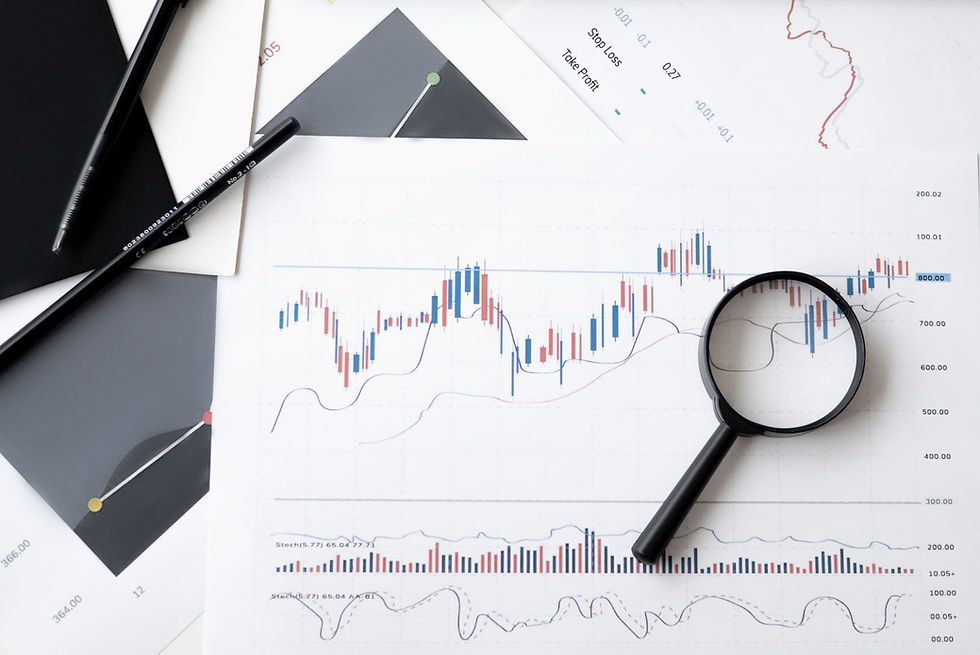Tariff Pauses and Market Moves: Is Stock Market Manipulation at Play?
- Geneka Holyfield
- Apr 10
- 3 min read

In today’s fast-paced financial landscape, headlines move markets—and sometimes, those movements raise eyebrows. Recently, a temporary pause on certain tariffs sparked a noticeable uptick in the stock market, leaving investors, analysts, and everyday Americans wondering: Was this organic market movement, or were deeper manipulations at play?
Let’s break it down.
The Tariff Pause: A Brief Overview
Governments use tariffs—essentially taxes on imports—to protect domestic industries or as leverage in international trade negotiations. But they come with side effects: tariffs can raise prices for consumers and complicate supply chains. So when a government pauses tariffs, particularly in key sectors like tech, energy, or agriculture, markets often breathe a sigh of relief.
That relief can look like a rally on Wall Street. Stocks in impacted industries suddenly look more attractive, and the broader market may benefit from improved investor sentiment. That’s what happened in this case. But not everyone is convinced it was that simple.
Market Reaction: Rational or Reactionary?
When the tariff pause hit the news, markets rallied quickly. Major indices posted gains, and investors rushed to reposition. Some called it a rational market reaction to reduced economic strain. Others, however, noticed something fishy—certain stocks surged before the news became public.
This leads us into murkier waters: stock market manipulation.
Stock Market Manipulation: What Is It, Really?
Stock market manipulation occurs when individuals or institutions intentionally interfere with the free and fair operation of the market—usually for personal gain. This can take many forms:
Insider trading: Buying or selling stocks based on material, non-public information.
Pump and dump schemes: Artificially inflating a stock’s price to attract investors, then selling off shares at the peak.
Coordinated trading: Institutional players executing large trades at strategic times to move markets.
A sudden surge in stock prices—before the tariff pause was officially announced—raises red flags. Who knew what, and when? Was the information leaked? Or did powerful players position themselves ahead of the news, tipping the scales in their favor?
The Intersection of Policy and Profit
This isn't the first time public policy and market performance have danced a suspicious tango. Government actions—especially when unanticipated—can create massive profit opportunities. But when well-timed trades consistently precede major policy announcements, it blurs the line between savvy investing and systemic exploitation.
That’s why transparency, accountability, and robust regulatory enforcement matter. It’s also why retail investors need to be aware of the broader forces that can influence the market—beyond charts and earnings reports.
What Should Everyday Investors Do?
Stay informed: Follow both market trends and policy developments.
Diversify your portfolio: Don’t put all your eggs in one basket, especially in reaction to political news.
Watch for patterns: Sudden, unexplained stock moves can be a clue that something’s happening behind the scenes.
Be cautious with hype: Just because the market jumps on news doesn’t mean it’s time to buy in. Ask why the move happened—and who benefits.
Final Thoughts:
Markets are meant to reflect reality—not be controlled by it. When major policy shifts like tariff pauses are announced, it’s natural for the market to respond. But when those shifts seem to benefit a few disproportionately, or when the timing seems too perfect, it’s fair to ask hard questions.
Because at the end of the day, a healthy market isn’t just about profits. It’s about trust.



Comments